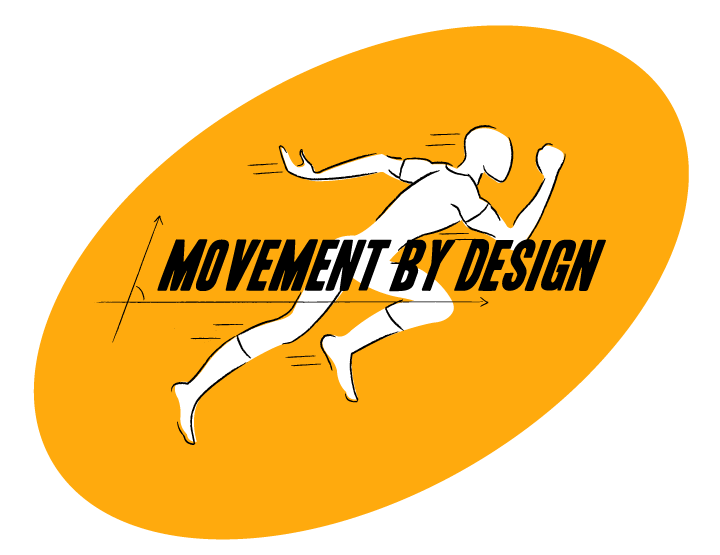How Physiotherapy Helps Mumbaikars
Mumbai’s unique challenges—be it long commuting hours, desk jobs, or intense sports culture—make physiotherapy an essential tool for urban wellness. Here’s how it can help:
1. Pain Management
- Techniques such as manual therapy, dry needling, TENS (Transcutaneous Electrical Nerve Stimulation), and ultrasound therapy are effective for managing pain from injuries, arthritis, and chronic conditions.
2. Recovery and Rehabilitation
- Aids in regaining mobility and strength after surgeries, injuries, or strokes.
- Customized exercise programs are designed to rebuild muscles and restore functionality.
3. Improved Mobility and Flexibility
- Addresses issues such as stiff joints, restricted movement, and muscle imbalances common among desk workers.
- Includes exercises and stretches to enhance flexibility and range of motion.
4. Postural Alignment and Balance
- Corrects poor posture caused by prolonged sitting, reducing strain on muscles and joints.
- Improves balance, particularly benefiting elderly residents in Mumbai.
5. Injury Prevention
- Strengthens muscles and joints, reducing the risk of future injuries for both office-goers and athletes.
- Provides guidance on proper movement and exercise techniques.
6. Support for Chronic Conditions
- Manages conditions such as arthritis, fibromyalgia, and lower back pain without heavy reliance on medication.
- Facilitates natural recovery, reducing dependency on invasive treatments.
Why Do You Need Physiotherapy in Mumbai?
To Recover from Injuries
If you’ve suffered a sports injury, been in a traffic accident, or undergone surgery, physiotherapy offers a safe path to recovery. With access to skilled physiotherapists in Mumbai, you can regain strength and mobility.
To Manage Chronic Pain
Physiotherapy effectively treats chronic conditions like lower back pain, sciatica, or frozen shoulder—common ailments due to Mumbai’s demanding lifestyle.
To Avoid Recurring Problems
Recurrent issues like muscle strains and joint instability are addressed by identifying and correcting their root causes.
To Enhance Athletic Performance
Mumbai’s vibrant sports community benefits from physiotherapy’s sport-specific training and injury prevention programs, which enhance performance and resilience.
To Improve Quality of Life
From addressing posture-related discomfort caused by long hours of commuting to empowering individuals to live pain-free, physiotherapy helps you lead an active, fulfilling life.
Types of Physiotherapy Available in Mumbai
Mumbai offers specialized physiotherapy services tailored to diverse needs:
- Musculoskeletal Physiotherapy: For issues related to bones, joints, and muscles.
- Neurological Physiotherapy: For conditions like stroke, Parkinson’s disease, and multiple sclerosis.
- Cardiopulmonary Physiotherapy: Focused on heart and lung recovery.
- Pediatric Physiotherapy: Helping children overcome developmental challenges.
- Sports Physiotherapy: Specializing in preventing and treating sports-related injuries.
Why Mumbai Residents Are Choosing Physiotherapy
In a city that never sleeps, prioritizing physical well-being is essential. Mumbai’s physiotherapy centers are equipped with state-of-the-art facilities, experienced practitioners, and programs designed for urban lifestyles. With a focus on holistic recovery and wellness, physiotherapy ensures you can keep up with the demands of city life while staying pain-free and active.
Conclusion
Physiotherapy is more than just a treatment—it’s a gateway to improved health and vitality. In Mumbai, where the challenges of urban living often take a toll on the body, physiotherapy provides a sustainable solution for recovery, prevention, and overall well-being. Whether you’re dealing with an injury, recovering from surgery, or simply looking to stay fit, physiotherapy is a safe, effective, and empowering choice.
Take the first step toward a healthier, more active life in Mumbai. Let your body move, heal, and thrive amidst the vibrant energy of the city.
Understanding Insurance for Physiotherapy in India
Physiotherapy has become an essential part of healthcare, aiding recovery from injuries, surgeries, and chronic conditions. However, many individuals are unaware of the insurance coverage available for physiotherapy treatments in India. Here’s what you need to know about navigating physiotherapy expenses and leveraging insurance benefits.
Is Physiotherapy Covered by Health Insurance in India?
Yes, many health insurance policies in India include physiotherapy coverage, but it often depends on the context of the treatment:
- Post-Hospitalization Coverage: Physiotherapy prescribed as part of post-hospitalization recovery (e.g., after surgery or trauma) is commonly covered for a specified period, typically 30–60 days.
- In-Patient Procedures: If physiotherapy is part of in-patient care during hospitalization, it is usually covered under the hospital bills.
- Standalone Coverage: Some comprehensive health plans now offer outpatient (OPD) benefits that include physiotherapy as part of the package.
Conditions for Coverage
Insurance coverage for physiotherapy is often subject to specific conditions:
- Medical Necessity: The treatment must be recommended by a doctor and supported by documentation.
- Policy Terms: Coverage varies across insurers and policies, so it’s crucial to review your plan’s inclusions and exclusions.
- Limitations on OPD: Outpatient physiotherapy coverage under OPD benefits may come with caps on the number of sessions or total reimbursement amount.
How to Claim Insurance for Physiotherapy
- Check Your Policy: Confirm if your insurance plan includes physiotherapy and under what conditions.
- Obtain a Prescription: A doctor’s recommendation and diagnosis are usually required for claims.
- Save Invoices: Retain bills and receipts from your physiotherapy sessions for reimbursement.
- Submit Claim: Follow the insurer’s claim procedure, ensuring all documents are complete.
Tips for Choosing a Policy with Physiotherapy Benefits
- Look for OPD Coverage: Some insurers, like Max Bupa, ICICI Lombard, and Star Health, offer plans with OPD benefits, covering outpatient physiotherapy.
- Comprehensive Health Plans: Opt for policies that cover a range of treatments, including rehabilitation therapies.
- Verify Network Clinics: Check if your insurer has tie-ups with physiotherapy clinics for cashless benefits.
Conclusion
Shoulder Injury and Rehabilitation: A Guide to Recovery and Resilience
The shoulder, one of the most mobile joints in the body, is essential for countless daily activities and athletic movements. Its unique range of motion, however, also makes it prone to injuries. Whether caused by overuse, poor posture, or trauma, shoulder injuries can significantly impact quality of life. Understanding these injuries and their rehabilitation process is key to regaining function and preventing future issues.


Common Shoulder Injuries
- Rotator Cuff Injuries
- Cause: Repetitive overhead motions or acute trauma.
- Symptoms: Pain, weakness, and difficulty lifting the arm.
- Shoulder Impingement
- Cause: Compression of tendons or bursa during overhead activities.
- Symptoms: Pain when lifting the arm or reaching above shoulder height.
- Frozen Shoulder (Adhesive Capsulitis)
- Cause: Inflammation of the shoulder joint capsule, often after immobility.
- Symptoms: Gradual stiffness and reduced range of motion.
- Dislocations and Instability
- Cause: The shoulder joint slipping out of its socket due to trauma or weak structures.
- Symptoms: Severe pain, swelling, and visible deformity.
- Labral Tears
- Cause: Damage to the cartilage surrounding the shoulder socket from overuse or sudden impact.
- Symptoms: Clicking sounds, pain, and decreased strength.
Rehabilitation for Shoulder Injuries
Rehabilitation plays a pivotal role in restoring shoulder function and preventing further damage. A comprehensive rehab program includes:
- Pain Management
- Use of ice, heat, and anti-inflammatory medications to reduce swelling and discomfort.
- Techniques like massage therapy or dry needling to relieve muscle tension.
- Range of Motion Exercises
- Gentle movements like pendulum swings and arm stretches to restore mobility.
- Strengthening Exercises
- Targeted exercises for the rotator cuff and scapular stabilizers, such as resistance band workouts.
- Postural Correction
- Education on maintaining proper posture to reduce stress on the shoulder joint.
- Physiotherapy
- Hands-on techniques from a physiotherapist to improve joint mobility and alleviate stiffness.
- Sports-Specific Training
- For athletes, rehabilitation includes drills to rebuild strength and coordination for their sport.
Preventing Shoulder Injuries
- Warm-Up Properly: Always include dynamic stretches and mobility exercises before physical activity.
- Strengthen Supporting Muscles: Regularly train the rotator cuff and scapular stabilizers.
- Use Proper Technique: Ensure correct form during exercises and sports activities.
- Avoid Overuse: Take rest days and cross-train to prevent repetitive stress on the joint.
- Maintain Good Posture: Avoid slouching to minimize strain on the shoulders.
When to Seek Help
If shoulder pain persists, worsens, or is accompanied by swelling, numbness, or limited motion, consult a healthcare professional. Early intervention with physiotherapy or medical treatment can prevent further complications and speed up recovery.
Conclusion
Shoulder injuries can be debilitating, but with the right approach to rehabilitation, recovery is achievable. Combining pain management, tailored exercises, and preventive strategies ensures not only healing but also long-term resilience. Whether you’re an athlete or someone recovering from a strain, taking proactive steps toward shoulder health can lead to a stronger, pain-free future.
Easy Guide To Common Causes of Back Pain
Back pain is a prevalent issue caused by a variety of lifestyle habits, medical conditions, and environmental factors. Prolonged poor posture, lack of activity, and repetitive movements are often key contributors. Here’s a simplified look at common causes of back pain, their implications, and preventive strategies.
How Physical Therapy Can Prevent Injuries
Customized physical therapy may be a useful way to ease low back pain, which affects an estimated 31 million Americans a new study says. Researchers from La Trobe University observed that ‘many patients with low-back disorders persisting beyond 6 weeks do not recover.
Customized Physical Therapy Can Ease Lower Back Pain
Customized physical therapy may be a useful way to ease low back pain, which affects an estimated 31 million Americans a new study says. Researchers from La Trobe University observed that ‘many patients with low-back disorders persisting beyond 6 weeks do not recover.’
Identifying And Treating Pain From Nerve Tension
Nerve tension is pain that occurs because a nerve is being compressed or stuck in its surrounding tissue which prevents it from moving within its tract like it normally does. This can happen for a variety of reasons. If a joint has been immobile for a period of time it increases the risk that a nerve can get a little stuck
Therapy Found Effective for Carpal Tunnel Syndrome
Customized physical therapy may be a useful way to ease low back pain, which affects an estimated 31 million Americans a new study says. Researchers from La Trobe University observed that ‘many patients with low-back disorders persisting beyond 6 weeks do not recover.






